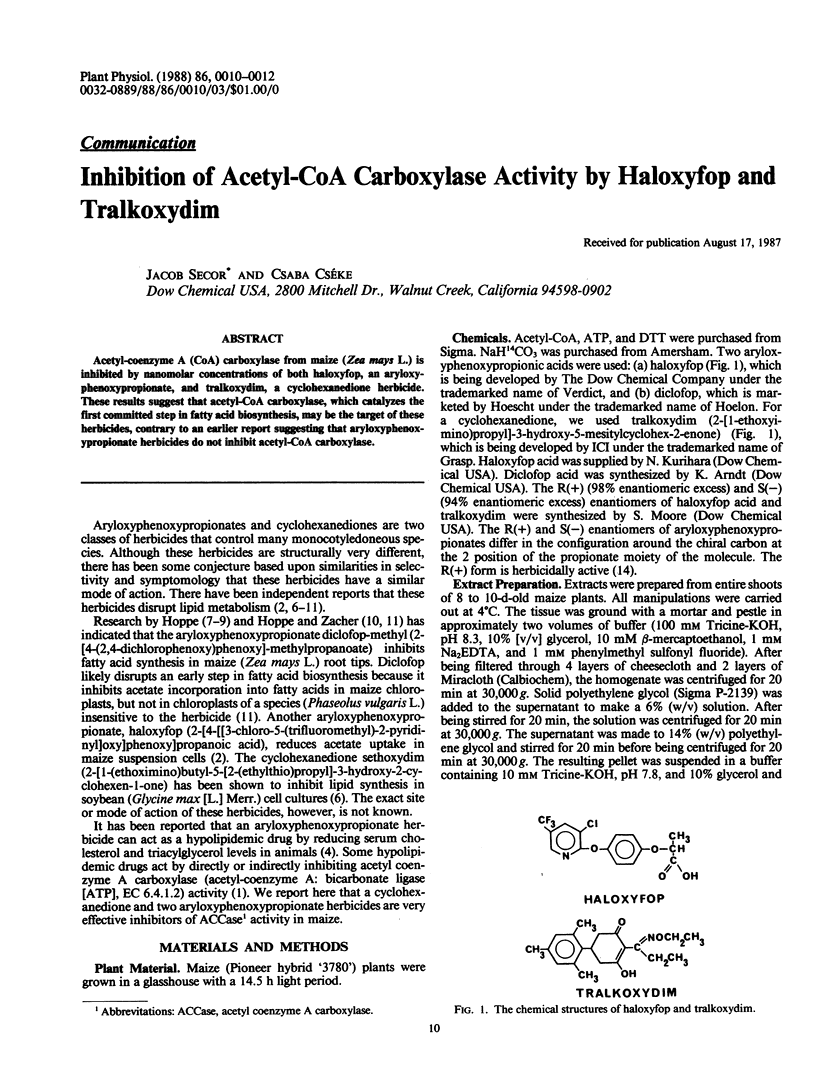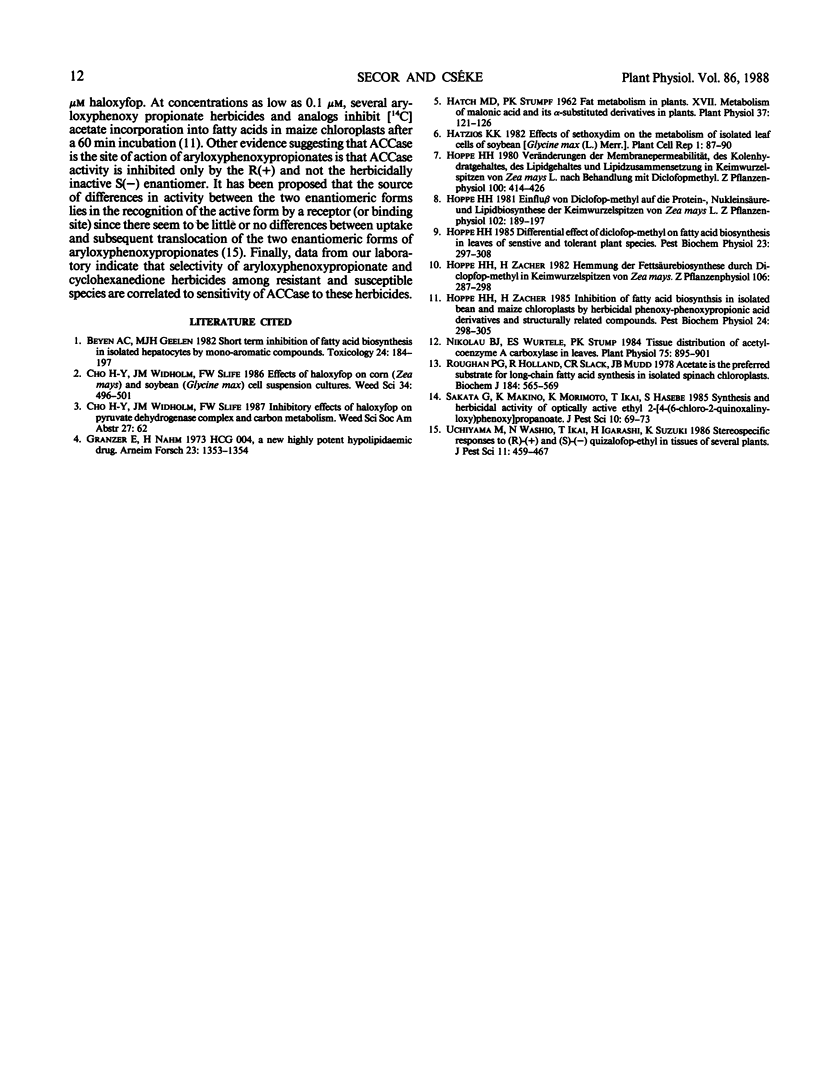Abstract
Acetyl-coenzyme A (CoA) carboxylase from maize (Zea mays L.) is inhibited by nanomolar concentrations of both haloxyfop, an aryloxyphenoxypropionate, and tralkoxydim, a cyclohexanedione herbicide. These results suggest that acetyl-CoA carboxylase, which catalyzes the first committed step in fatty acid biosynthesis, may be the target of these herbicides, contrary to an earlier report suggesting that aryloxyphenoxypropionate herbicides do not inhibit acetyl-CoA carboxylase.
Full text
PDF


Selected References
These references are in PubMed. This may not be the complete list of references from this article.
- Beynen A. C., Geelen M. J. Short-term inhibition of fatty acid biosynthesis in isolated hepatocytes by mono-aromatic compounds. Toxicology. 1982;24(3-4):183–197. doi: 10.1016/0300-483x(82)90001-4. [DOI] [PubMed] [Google Scholar]
- Granzer E., Nahm H. HCG 004, a new highly potent hypolipidaemic drug. Arzneimittelforschung. 1973 Sep;23(9):1353–1354. [PubMed] [Google Scholar]
- Hatch M. D., Stumpf P. K. Fat Metabolism in Higher Plants. XVII. Metabolism of Malonic Acid & Its alpha-Substituted Derivatives in Plants. Plant Physiol. 1962 Mar;37(2):121–126. doi: 10.1104/pp.37.2.121. [DOI] [PMC free article] [PubMed] [Google Scholar]
- Nikolau B. J., Wurtele E. S., Stumpf P. K. Tissue distribution of acetyl-coenzyme a carboxylase in leaves. Plant Physiol. 1984 Aug;75(4):895–901. doi: 10.1104/pp.75.4.895. [DOI] [PMC free article] [PubMed] [Google Scholar]
- Roughan P. G., Holland R., Slack C. R. Acetate is the preferred substrate for long-chain fatty acid synthesis in isolated spinach chloroplasts. Biochem J. 1979 Dec 15;184(3):565–569. doi: 10.1042/bj1840565. [DOI] [PMC free article] [PubMed] [Google Scholar]


